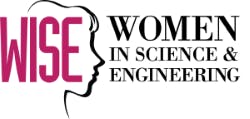Breaking the Mold: Women in Additive Manufacturing
Listening to talking heads on a computer screen for six hours from your home office isn’t the norm when it comes to attending trade conferences. Neither is an all-female speaker lineup focusing on additive manufacturing.
The recent TIPE 3D Printing 2021conference (Jan. 27-28) organized by the non-profit Women in 3D Printingfeatured an all-female speaker lineup with topics ranging from advancements in additive manufacturing, biomaterials and metal additive printing to mass customization, pushing the limits of 3D printing in healthcare and human-centered innovation.
The impetus for bringing together the who’s-who roster of speakers stemmed from the recognition that the industry is largely male-dominated. Today, roughly 12% of the additive manufacturing industry is comprised of women, noted the 2021 Worldwide Additive Manufacturing Salary Survey prepared by Alexander Daniels Global. With industry efforts like the TIPE 3D Printing event, efforts are being made to buck the trend, noted the report.
Consider the success of the conference proof-positive that a collective effort can inspire both visionaries and hopefuls. Over the course of two days, the conference attracted 147 speakers and more than 1,600 attendees.
Participants were corralled from Women in 3D Printing’s network of more than 75 chapters across 28 countries. The group grew from a blog post into one of the largest AM communities worldwide, noted Founder and Principal Nora Toure.
In one of two keynotes, a panel of women reflected on their own leadership styles. “This was a forum where no-one was a token, and no-one shied away from hard conversations,” commented moderator Sarah Goehrke, founder of Additive Integrity LLC.
Panelists—Michelle Bockman, CEO, 3DPrinterOS; Vicki Holt, president and CEO, Protolabs; Marie Langer, CEO, EOS; and Sonita Lontoh, CMO of 3D Printing and Digital Manufacturing, HP—were prompted to share their observations as drivers of change and to discuss ideas on diversity, allyship and sustainability. They also fielded audience questions on bottlenecks to AM adoption, on whether the future of the industry is centralized or decentralized, and how non-executive men can empower women.
What follows below are highlights culled from the “Power Women” keynote. Panelists’ comments have been edited for brevity and clarity.
Gender disparities can be well-served through allyship; gender-parity efforts are effective when men believe they can participate.
Michelle Bockman : Male allies. If you as a female have an idea, run the idea by a male colleague you have a relationship with—especially if he has some influence. Get his feedback, get support and get your ally into the meeting. Make sure he supports you, or he massages the idea a little bit better if you can’t, so the person that you’re pitching it to understands it. I think that’s pretty powerful.
Opportunities abound in driving sustainability initiatives. Focus on product and process redesign, explore niches and grow the ecosystem.
Marie Langer: When it comes to sustainability, when it comes to the effects, we call it responsible manufacturing. We really believe that we can have a huge effect here. Also, looking at the digital space, there is such a perfect fit. Everything [the industry] experienced during the pandemic convinced me that we have something revolutionary, very disruptive here that can contribute to a beneficial world where we’re more conscious more conscientious with the resources. We offer different concepts to the world, and that is what convinced me.
Women remain significantly outnumbered in entry-level management. The proportion of women in senior leadership differs by role and management style.
Sonita Lontoh : This is a generalization, but I do think female leaders are more empathetic and collaborative…For all of us working in male-dominated technology and manufacturing sectors, female leaders are customer-centric. Women take the time to understand customers’ pain points and can articulate how their solutions—even in collaboration with other solutions from other companies—can actually help solve customer problems
Leaders develop other leaders, instead of other followers. And in my experience, female leaders seem to pay more attention to that. Maybe they are more intentional and more willing to develop others as leaders. And we’re more collaborative and inclusive…What you get when you mix people from diverse backgrounds and diverse experiences is what I call the value network.
Editor's Note: Machine Design's Women in Science and Engineering (WISE) hubcompiles our coverage of gender representation issues affecting the engineering field, in addition to contributions from female authors and subject matter experts within various subdisciplines. Click here for more.
About the Author

Rehana Begg
Editor-in-Chief, Machine Design
As Machine Design’s content lead, Rehana Begg is tasked with elevating the voice of the design and multi-disciplinary engineer in the face of digital transformation and engineering innovation. Begg has more than 24 years of editorial experience and has spent the past decade in the trenches of industrial manufacturing, focusing on new technologies, manufacturing innovation and business. Her B2B career has taken her from corporate boardrooms to plant floors and underground mining stopes, covering everything from automation & IIoT, robotics, mechanical design and additive manufacturing to plant operations, maintenance, reliability and continuous improvement. Begg holds an MBA, a Master of Journalism degree, and a BA (Hons.) in Political Science. She is committed to lifelong learning and feeds her passion for innovation in publishing, transparent science and clear communication by attending relevant conferences and seminars/workshops.
Follow Rehana Begg via the following social media handles:
X: @rehanabegg
LinkedIn: @rehanabegg and @MachineDesign




